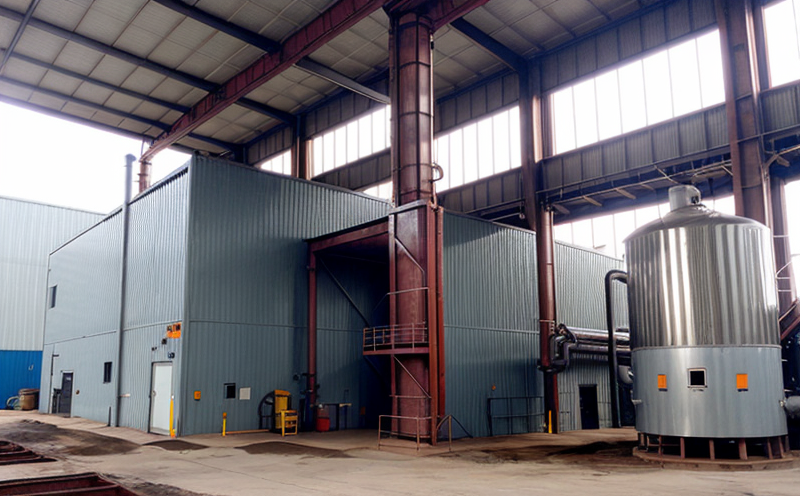Industrial furnace inspection
The inspection of industrial furnaces is a critical component in ensuring safety and efficiency within manufacturing processes. Industrial furnaces are used across various sectors including aerospace, automotive, chemical processing, electronics, and more. These furnaces often operate at high temperatures and pressures, making them susceptible to wear and tear over time.
Regular inspection of industrial furnaces helps prevent accidents and extends the lifespan of the equipment. This process involves a thorough examination of all components that may be exposed to heat, such as refractory materials, burners, fans, and controls. The aim is to identify any defects or signs of wear before they lead to catastrophic failures.
The inspection procedure typically includes visual checks, non-destructive testing (NDT) methods like ultrasonic testing, radiography, and magnetic particle inspection, and destructive testing where necessary. Non-destructive tests allow for the assessment of internal and external integrity without damaging the component, which is crucial in maintaining operational continuity.
For instance, in aerospace manufacturing, industrial furnaces are used to heat-treat components like turbine blades and engine casings. It's essential that these furnaces operate at precise temperatures and pressures; any deviation could compromise the structural integrity of the parts produced. By conducting regular inspections, manufacturers can ensure compliance with international standards such as ISO 9712 for NDT personnel qualifications.
Another critical aspect is the examination of control systems, which manage temperature and pressure within the furnace. These systems must be reliable to maintain consistent conditions during production runs. Any malfunctioning controls could lead to inconsistencies in product quality or even safety hazards.
In summary, industrial furnace inspection plays a vital role in maintaining safety standards and operational efficiency. By adhering to rigorous inspection protocols and utilizing advanced NDT techniques, industries can ensure that their furnaces continue to meet stringent requirements set by regulatory bodies like the American Society for Testing and Materials (ASTM).
Applied Standards
The application of relevant standards in industrial furnace inspections ensures consistency and accuracy across different facilities. Some key international standards include:
- American Society for Testing and Materials (ASTM) E1316: This standard specifies the requirements for non-destructive testing personnel involved in the inspection of materials, components, or structures.
- International Organization for Standardization (ISO) 9712: This standard provides qualifications and training criteria for personnel performing non-destructive testing methods.
- European Committee for Standardization (CEN): Various CEN standards address specific aspects of industrial furnace inspection, including safety requirements and performance criteria.
These standards are crucial because they provide a framework that ensures all inspections follow best practices. Compliance with these standards helps in achieving consistent results across different facilities, thereby enhancing reliability and confidence in the outcomes.
Scope and Methodology
The scope of industrial furnace inspection encompasses several key areas:
- Visual Inspection: This involves a detailed visual examination of all visible parts of the furnace. It includes checking for cracks, corrosion, and any signs of wear.
- Non-Destructive Testing (NDT): Various NDT methods are employed to evaluate the internal structure without causing damage. These include:
- Ultrasonic testing: Utilizes high-frequency sound waves to detect flaws within materials.
- Radiography: Uses X-rays or gamma radiation to produce images of internal structures.
- Magnetic particle inspection: Detects surface and near-surface defects through the application of magnetic fields.
- Destructive Testing (DT): In some cases, destructive testing is necessary to fully assess material integrity. This involves breaking down samples for microscopic examination or other detailed analyses.
- Control System Evaluation: The inspection also covers the evaluation of control systems used in managing furnace conditions. This includes assessing sensors and actuators to ensure they function correctly under various operational scenarios.
The methodology employed depends on the specific requirements set by industry standards and company policies. For example, aerospace manufacturers may require more stringent testing due to the high stakes involved. In contrast, automotive plants might prioritize cost-effectiveness while still maintaining safety standards.
Quality and Reliability Assurance
Ensuring quality and reliability in industrial furnace inspections is paramount for maintaining operational efficiency and product integrity. Here are some key practices that contribute to this:
- Data Collection: Accurate data collection during each inspection allows for trend analysis over time, helping predict potential issues before they escalate.
- Training and Certification: Personnel involved in furnace inspections must be trained according to relevant international standards. Continuous professional development ensures that inspectors stay updated with the latest techniques and technologies.
- Documentation: Comprehensive documentation of all inspection activities, including findings and actions taken, helps maintain a clear record for future reference.
- Peer Review: Having another qualified inspector review findings can provide additional validation and reduce errors.
- Performance Monitoring: Continuous monitoring of furnace performance through regular inspections ensures adherence to specified operational parameters.
- Emergency Response Planning: In case of identified issues, having a well-defined emergency response plan is crucial for minimizing downtime and preventing accidents.
By implementing these practices, industries can significantly enhance the reliability and longevity of their industrial furnaces. This not only reduces maintenance costs but also contributes to safer working environments and higher product quality standards.





